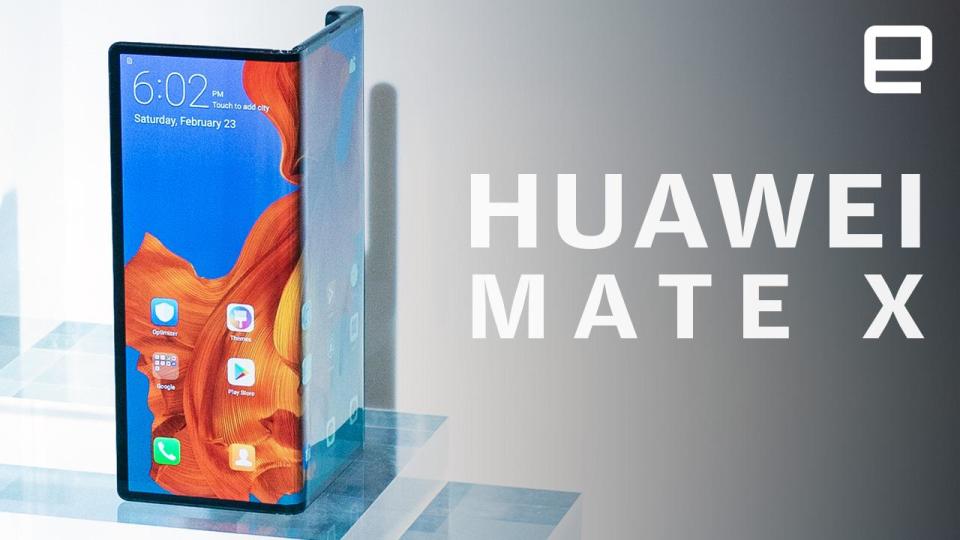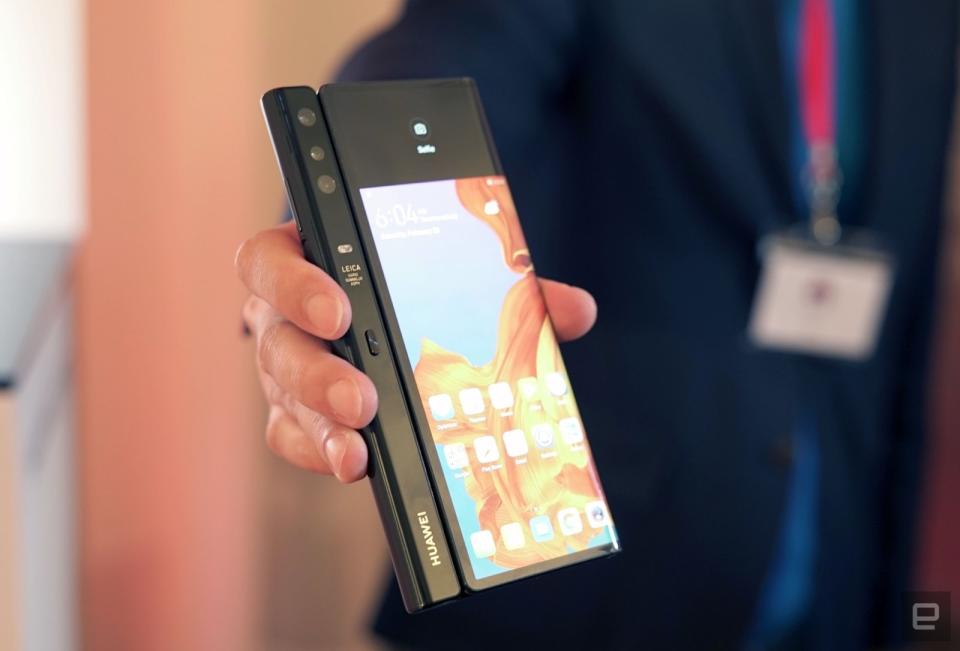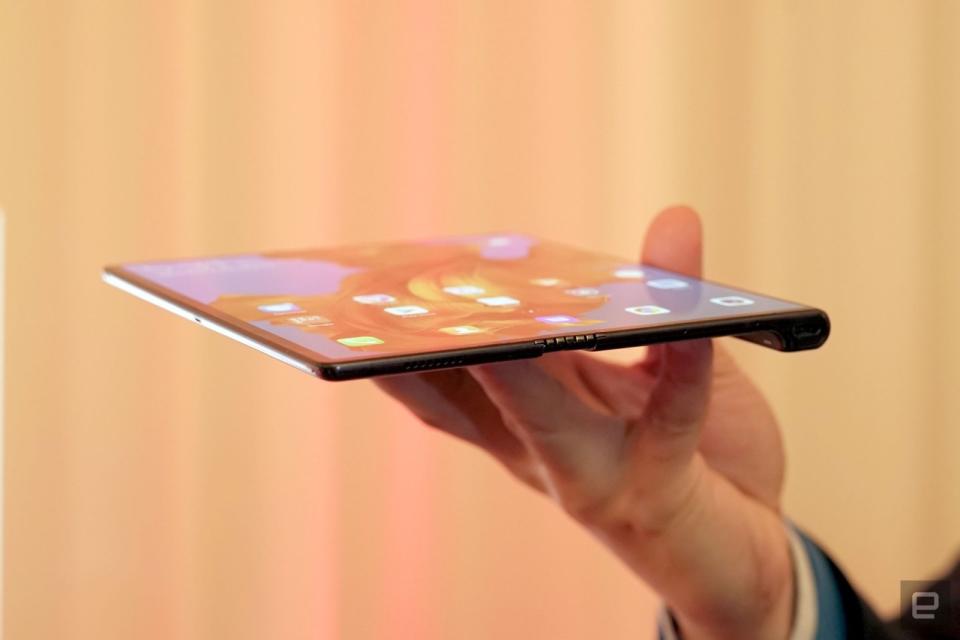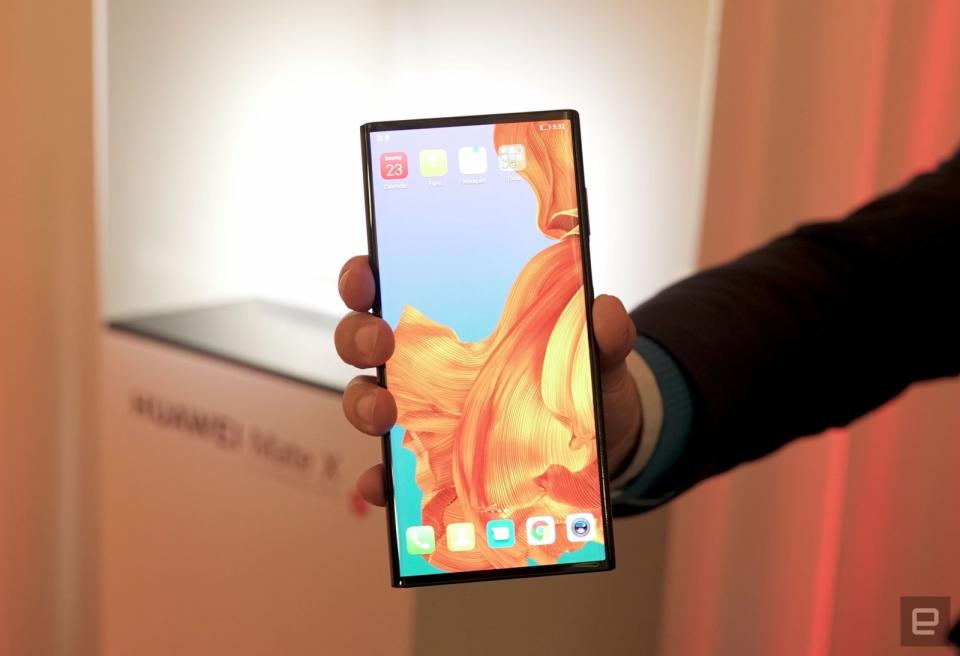Huawei Mate X: A first look at Samsung’s biggest foldable rival
An intriguing, but more expensive, alternative to the Galaxy Fold.
Foldable phone fever meets 5G mania in Huawei's latest flagship. At MWC, the company unveiled the new Mate X, joining the likes of Samsung and Royole in offering smartphones with folding screens. Huawei's Mate X also claims to be the fastest 5G folding phone -- but it's not the first in the category to support the latest networking standard. We're not looking at a me-too product here; Huawei's take on the device has a few compelling differences from other folding phones we've seen so far that has me thinking it may have the best approach. We were able to check out a prototype (though we weren't allowed to touch it), and from that brief encounter, I'm already intrigued.
Here's the basic premise. The Mate X has two screens -- a 6.6-inch main display and a 6.38-inch one on the rear. Open the device up and these combine to become one 8-inch panel with a 2,480 x 2,000 resolution. In all three configurations, the screen is 2,480 pixels tall, with a 1,148-pixel width on the front and 892-pixel on the back. The Galaxy Fold, on the other hand, has a slightly smaller 7.3-inch screen on the inside that folds inwards. Samsung offers a 4.6-inch panel on the outside for use when closed. The Mate X is a little slimmer, too, at 11mm (0.43 inches) folded compared to the Fold's 17mm (0.67 inches).
At the center of the Mate X is what Huawei's calling a Falcon Wing hinge, which curves outwards -- similar to Royole's setup. On either side of the hinge sit battery cells that offer 4,500mAh of power. That's bigger than the Galaxy Fold's 4,380mAh combined, which would normally take a pretty long time to charge. Huawei believes it can mitigate that with its updated SuperCharge technology, which it says can get the Mate X to 85 percent charged in 30 minutes.
The differences between Huawei and Samsung's approaches are where it gets interesting. The Mate X has a long, narrow bar (in "Interstellar Blue") on the back that houses its three Leica cameras and a power button. Like the Galaxy Fold, the Huawei phone has a fingerprint sensor embedded into the power button. But compared to the six total cameras on the Fold, Huawei's tri-camera system on the Mate X feels like a more measured approach versus Samsung's overkill.
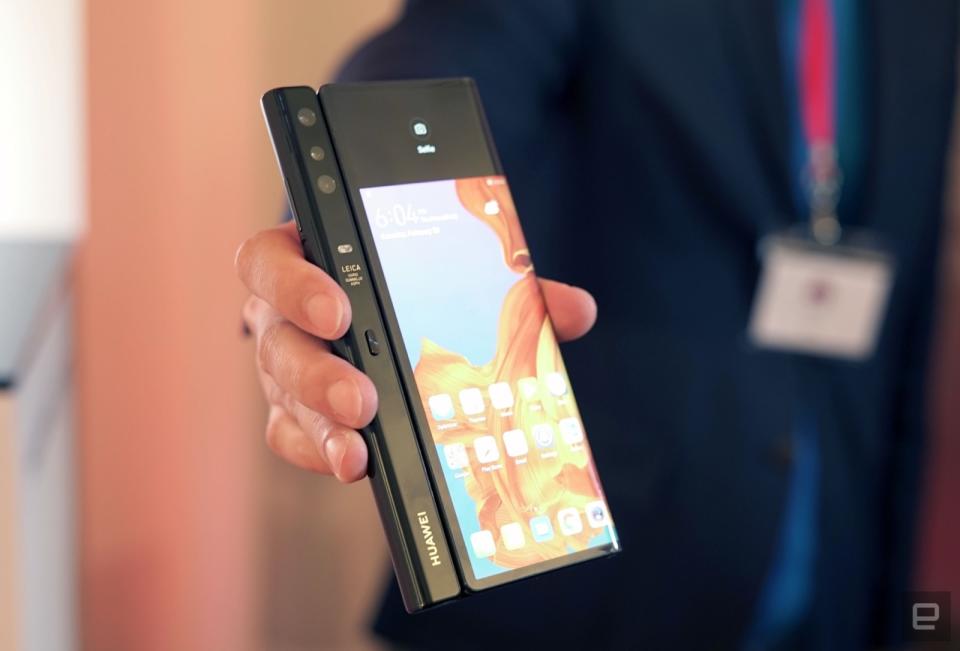
There may only be one set of cameras here, but they seem to be versatile enough whether you're shooting a landscape or a selfie. If you want to snap a portrait, just point the lenses at your mug and use the screen facing you to shoot. Flip over to the other display if you want to capture what's in front of you. When you're taking a photo of a person, they can also see themselves in the screen facing them and adjust their posture, hair, expression or anything else they want. The cameras also work when the Mate X is unfolded, though you'll look like you're using a tablet to take a picture. Ew.
Since the Mate X's cameras are neatly tucked away into the strip, there's no need to have a notch for the cutout in the displays. You'll get a full edge-to-edge screen in all configurations, compared to the diminutive 4.6-inch screen that takes up just about two-thirds of the Galaxy Fold's rear.
Huawei's "bar" is also slightly curved, which has the added benefit of providing a grip for the device so you can easily wield it with one hand. The setup reminded me a bit of Lenovo's Yoga tablets from 2013, which had a cylinder on one side to house a kickstand. Huawei's grip also contains the Mate X's USB-C charging port on the top edge.
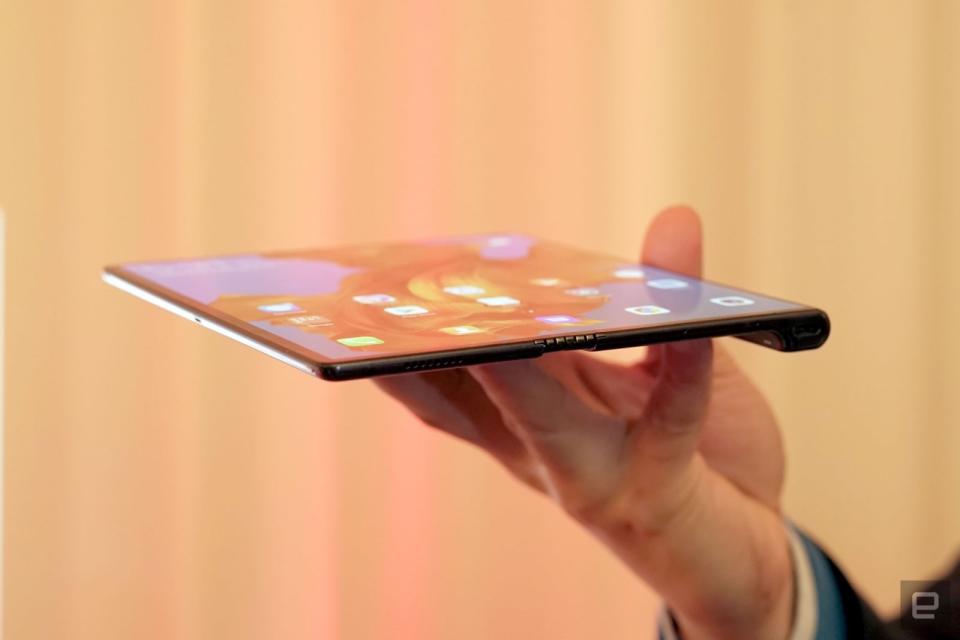
Unlike the Galaxy Fold, the Mate X appears to snap completely shut when folded, meaning there isn't a gap between the two halves. That is impressive in and of itself -- it's the first foldable phone we've seen without one, and it's notable for Huawei to be the company to achieve that, instead of display experts Samsung.
Of course, we haven't been able to touch either device yet, so it's entirely possible neither the Fold nor the Mate X screens actually work when folded. But from a pure engineering-appreciation standpoint, Huawei has the upper hand right now.
In the future (when networks become available), I'm intrigued to see if the Mate X's Balong 5000 modem does indeed reach 5G speeds that are twice as fast as Qualcomm's Snapdragon X50. According to Huawei, that radio and the quad-antenna setup here help the Mate X hit 4.6 Gbps downlink, compared to the Snapdragon X50's 2.3 Gbps. The foldable flagship will also pack the company's Kirin 980 chipset, which powers the speedy Mate 20 Pro. I'm glad Huawei is using high-end guts inside the Mate X -- this is essentially two phones in one and will need all the juice it can to run smoothly.
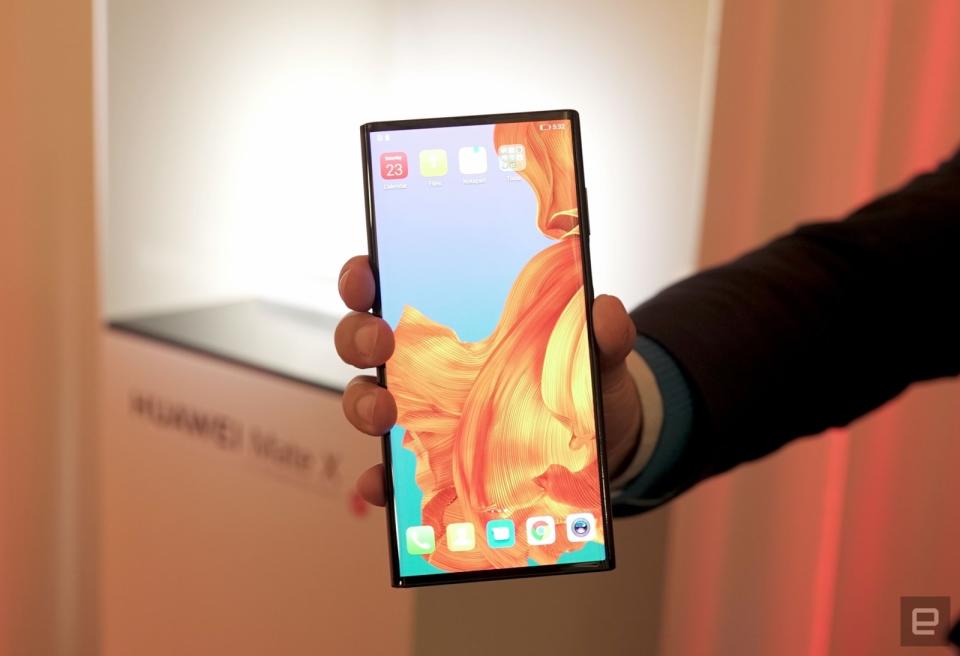
We weren't able to see the Mate X do anything other than display the home screen, so I can't tell you if it's good for multitasking. But Huawei said you'll be able to run two apps side by side and enjoy your movies on the 8-inch screen.
The future of smartphones seems to be foldable, and I'm sure we'll see more of these devices here at MWC. That future may well be very expensive, too: Huawei said the Mate X will start at €2,299 (about $2,600) and be available in the middle of 2019. Samsung's Galaxy Fold is slated for a late April release at a whopping $1,980. While it's exciting to see these innovations take place, I'd wait for second-generation devices or at least till full reviews of these newfangled flagships before spending any money on them.

